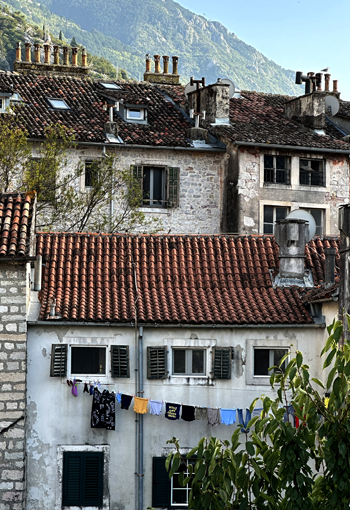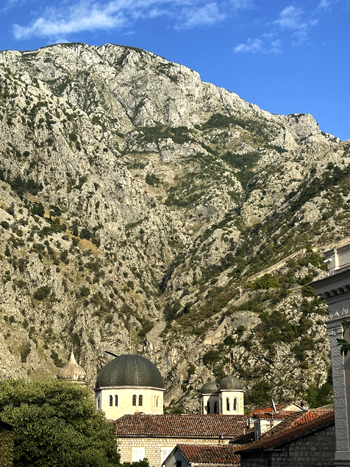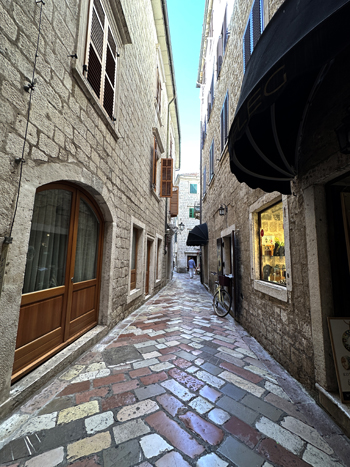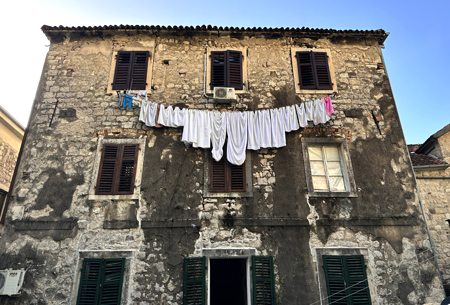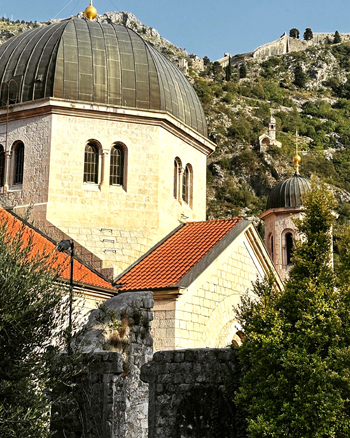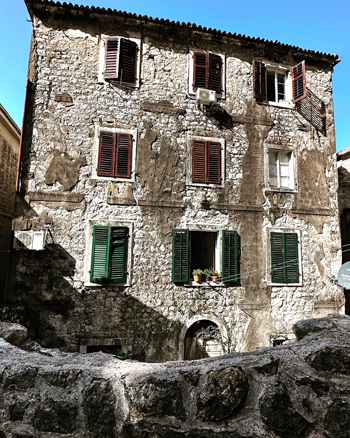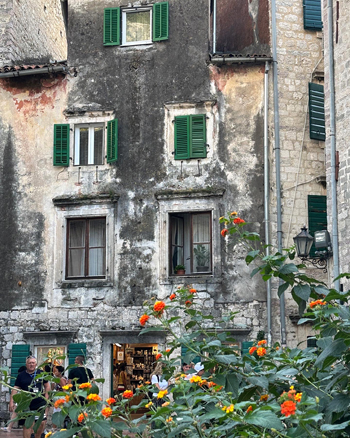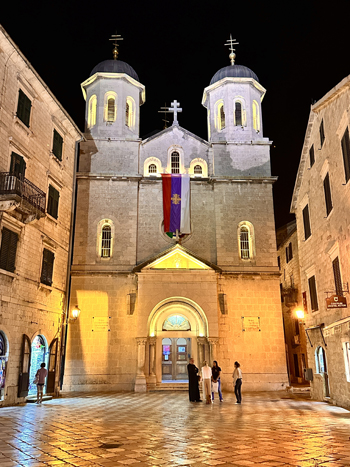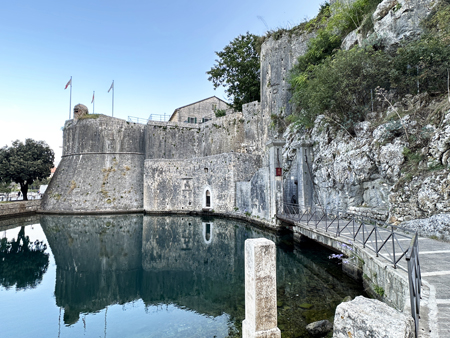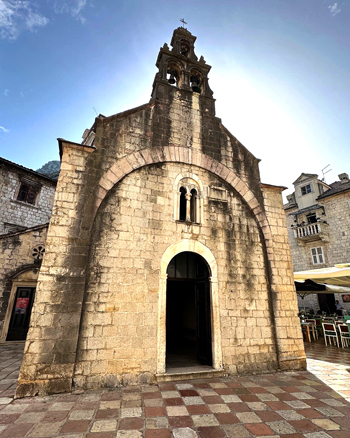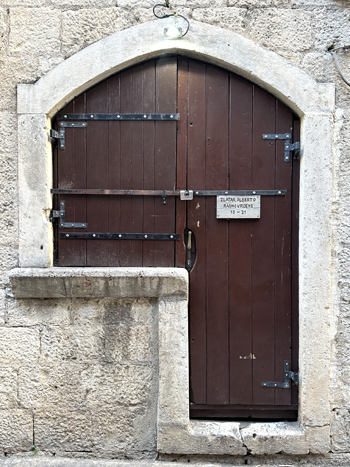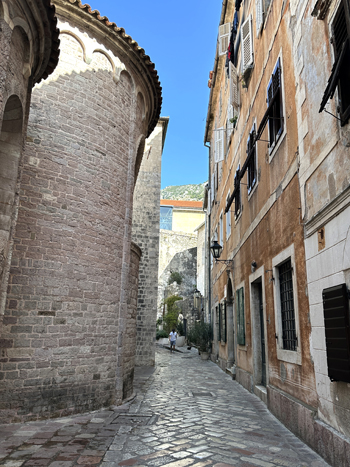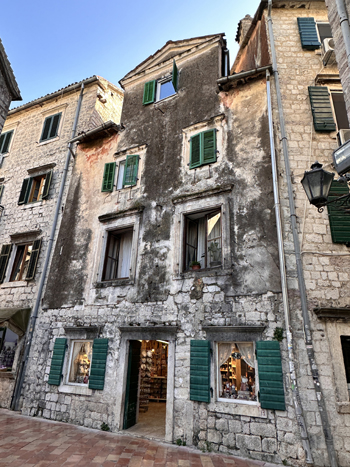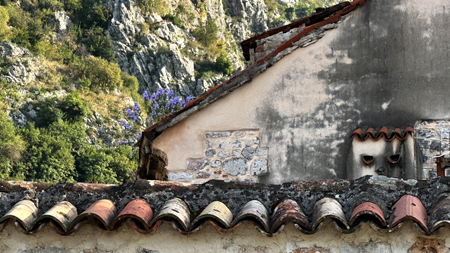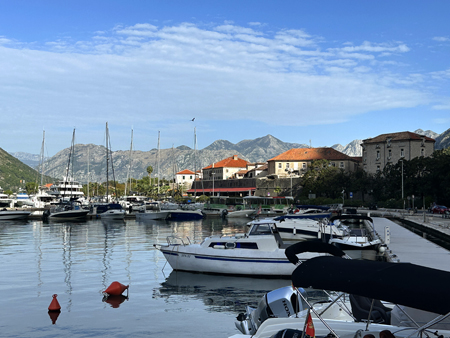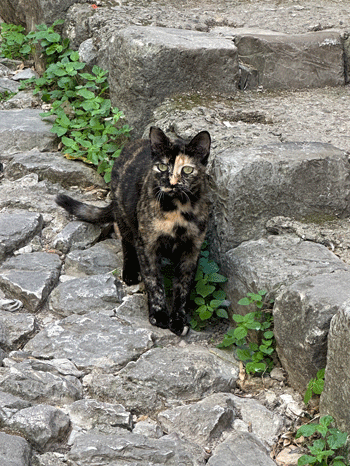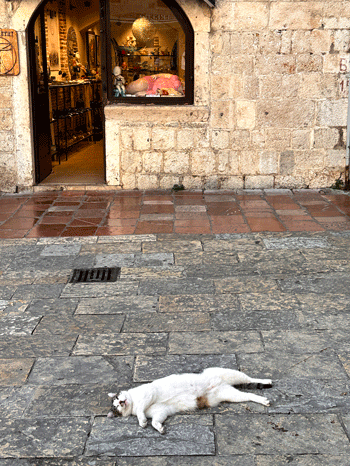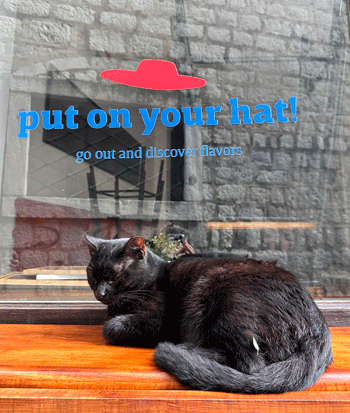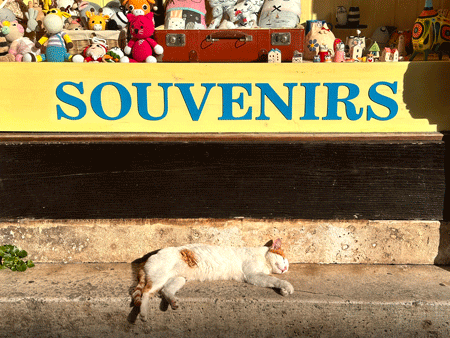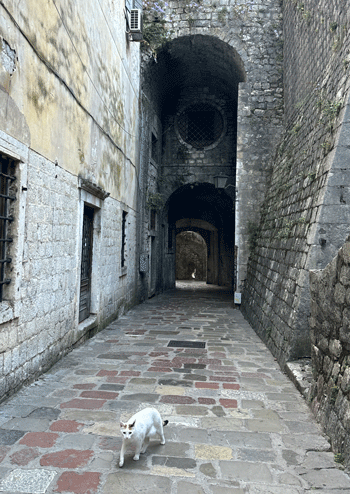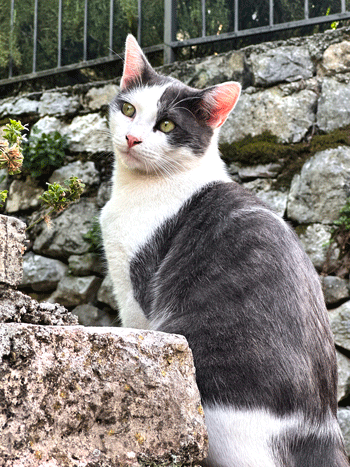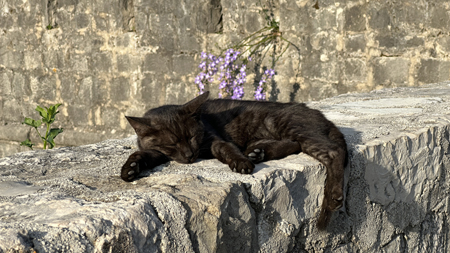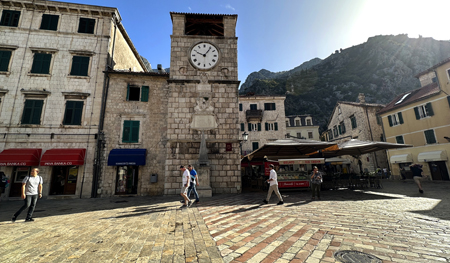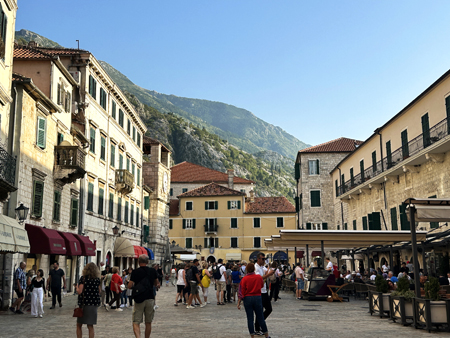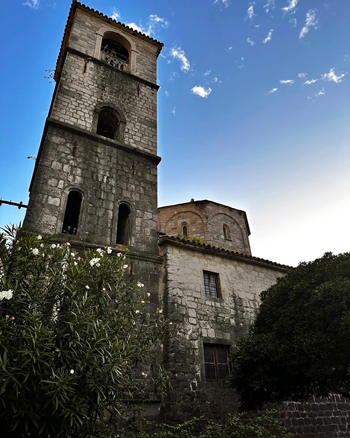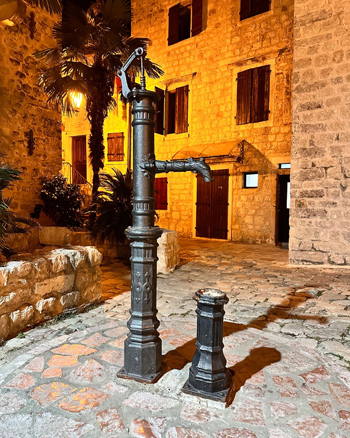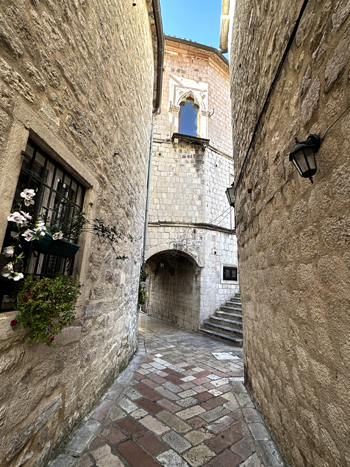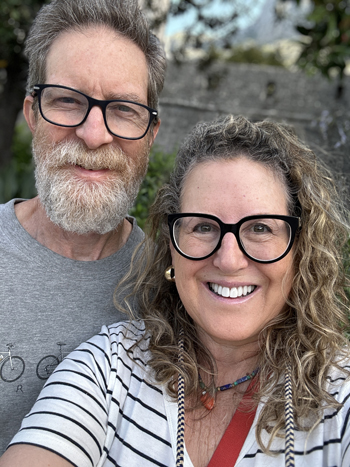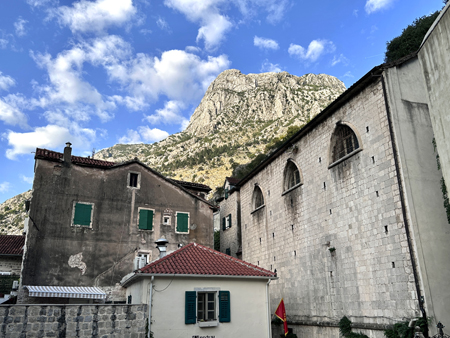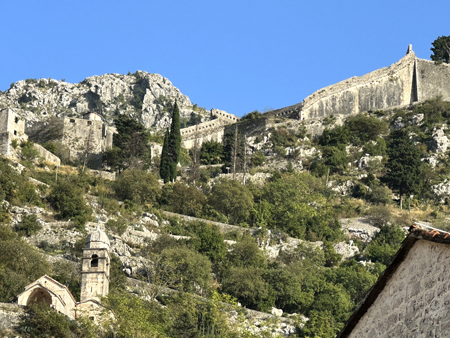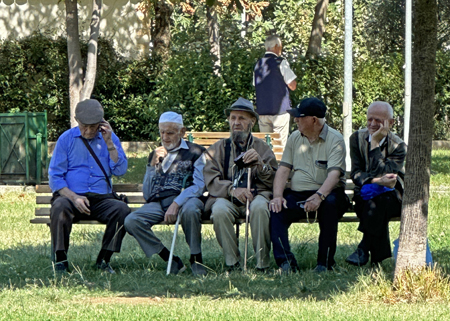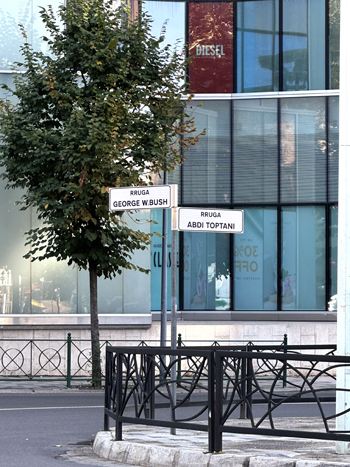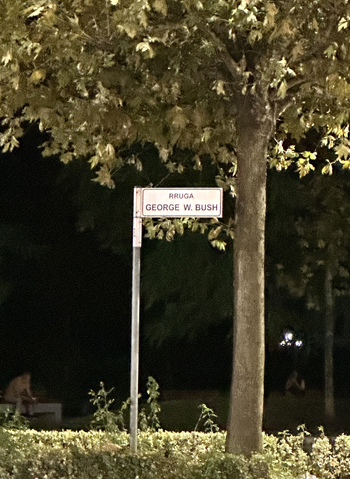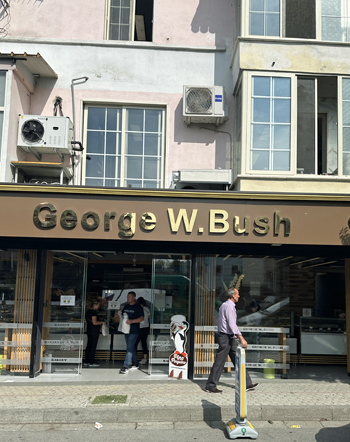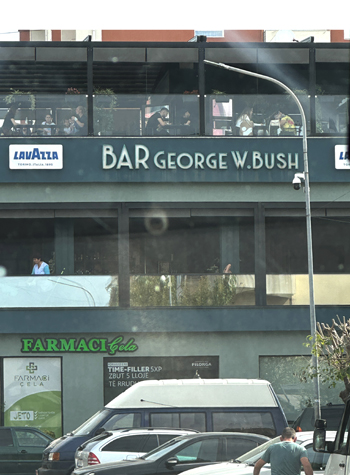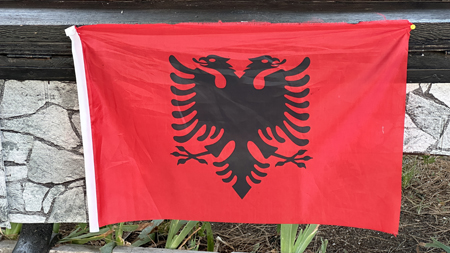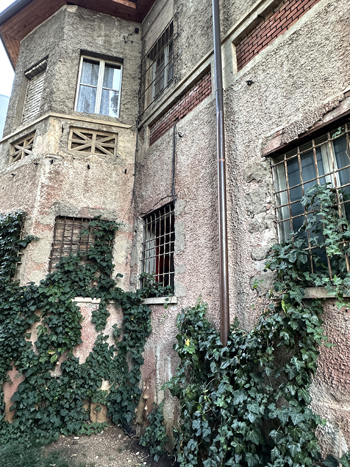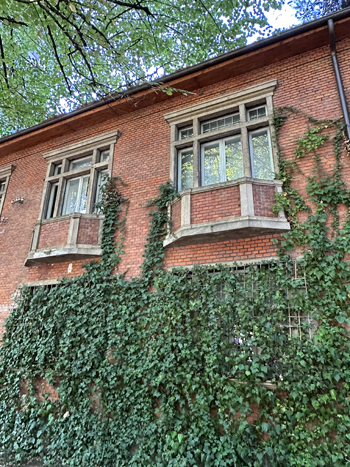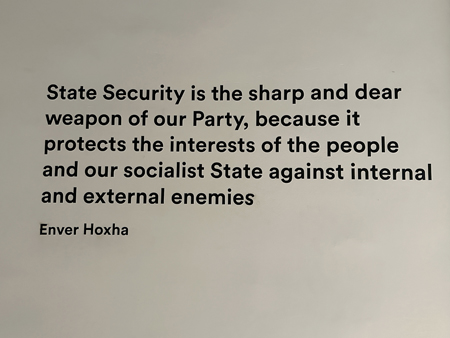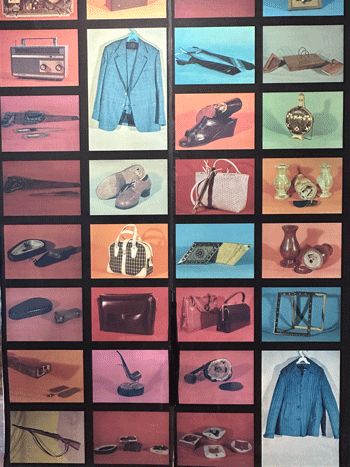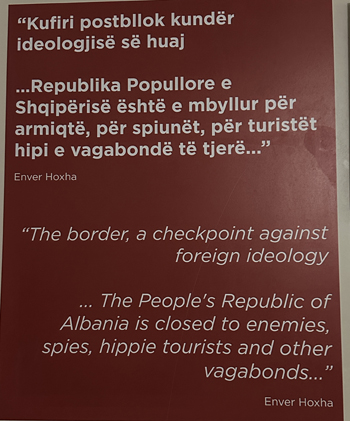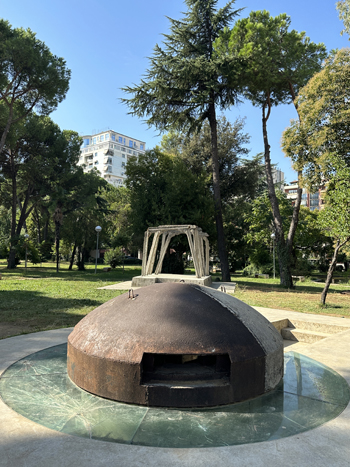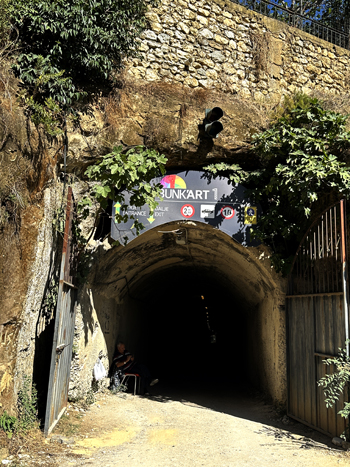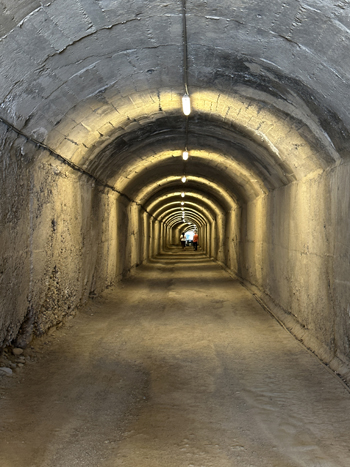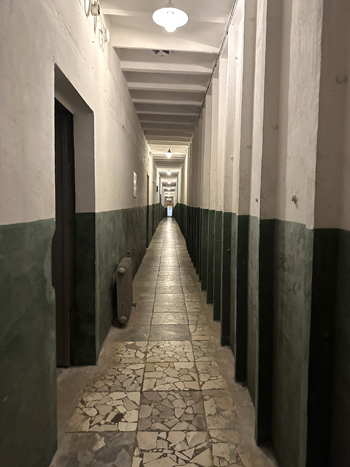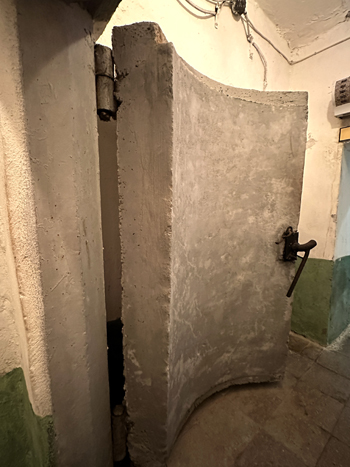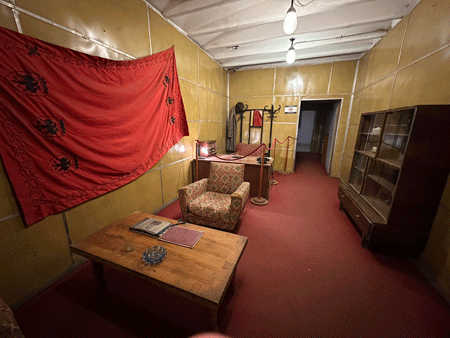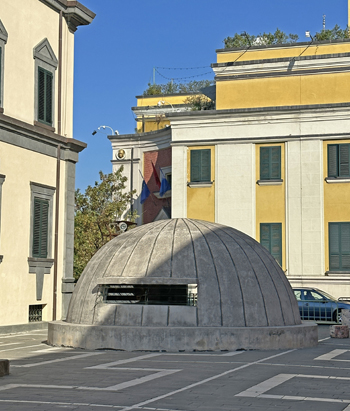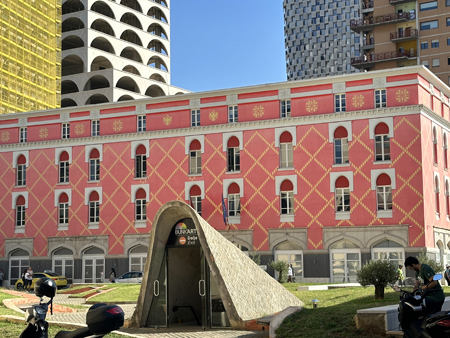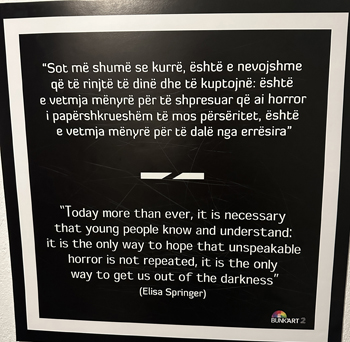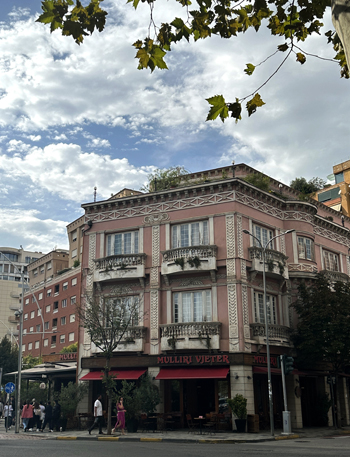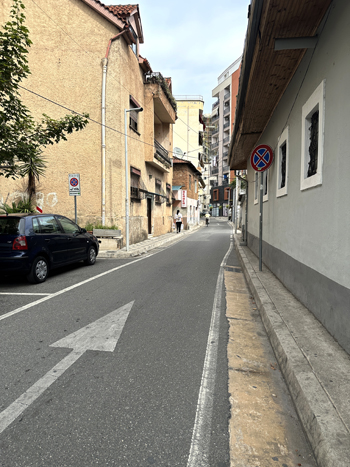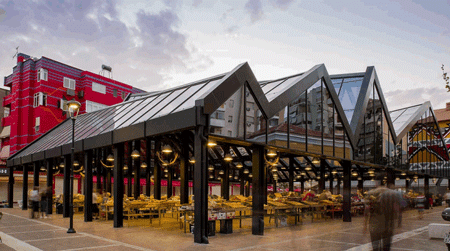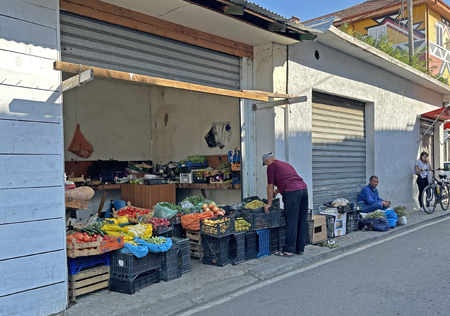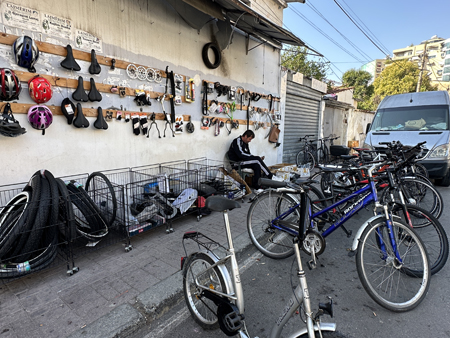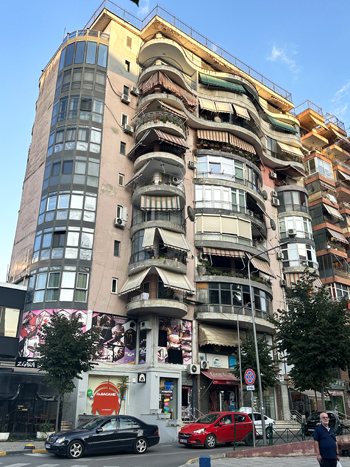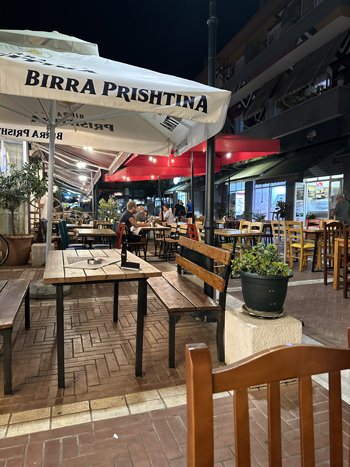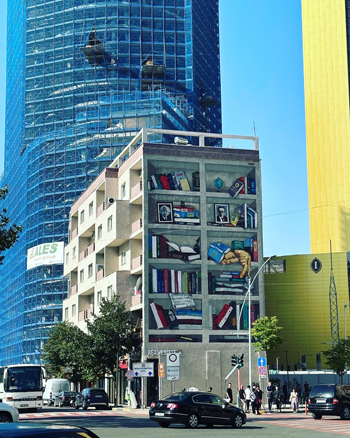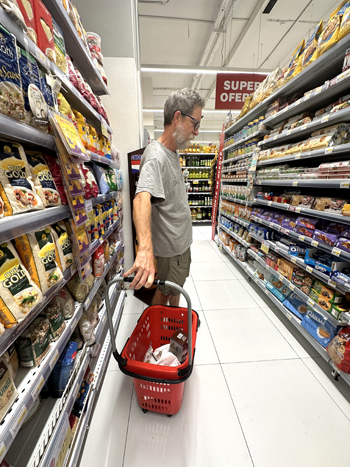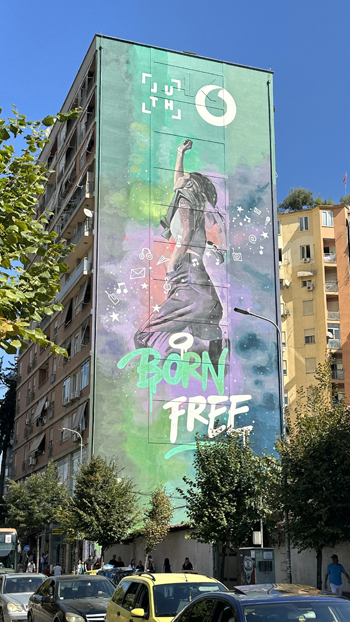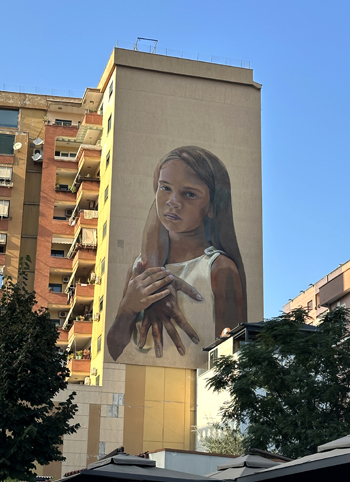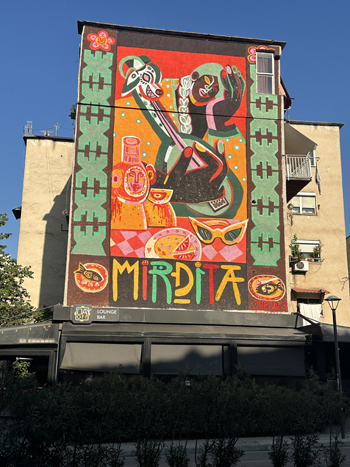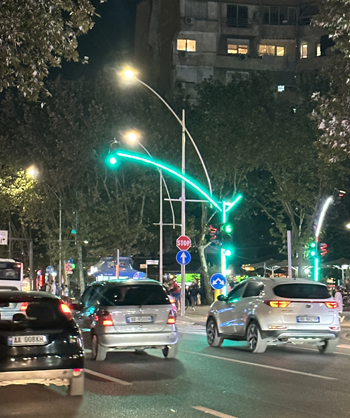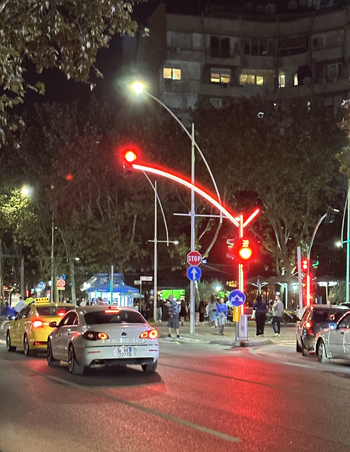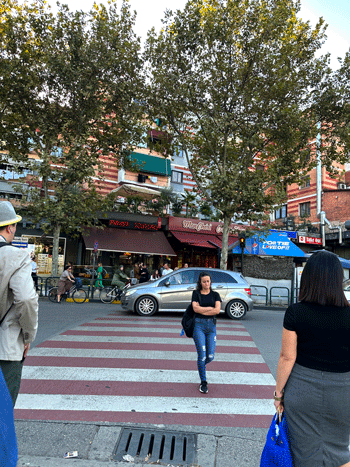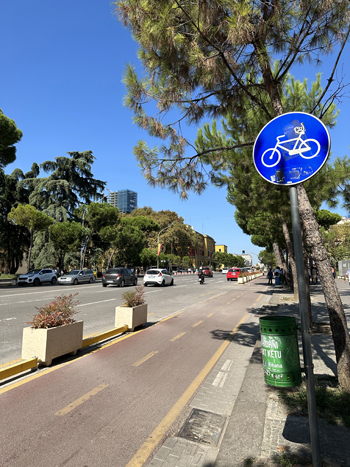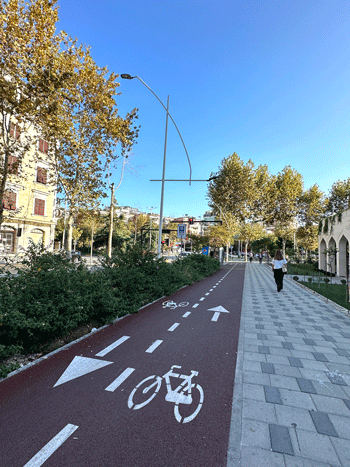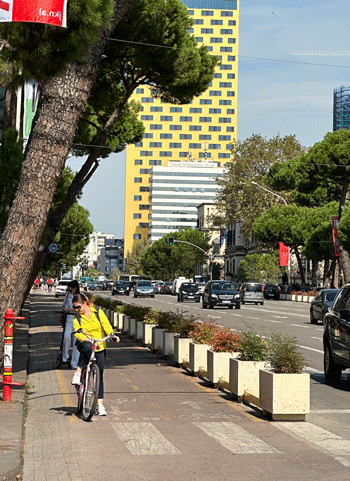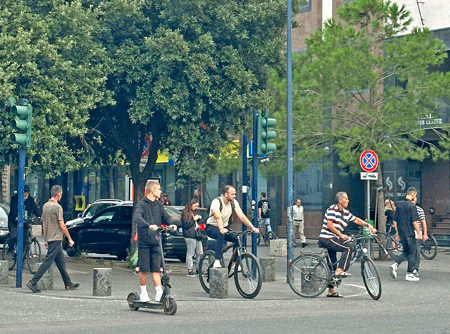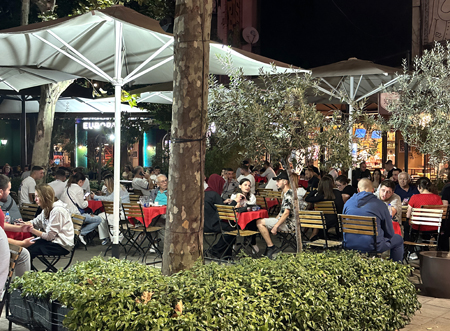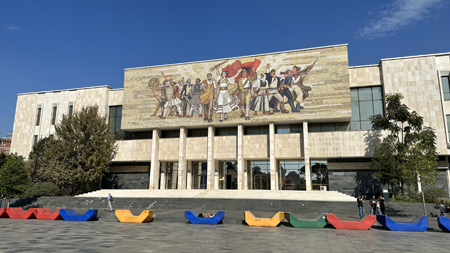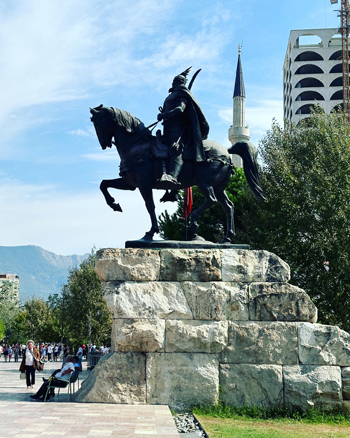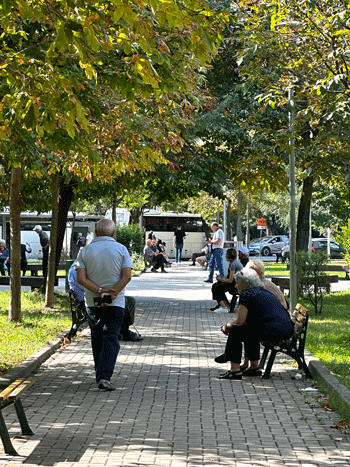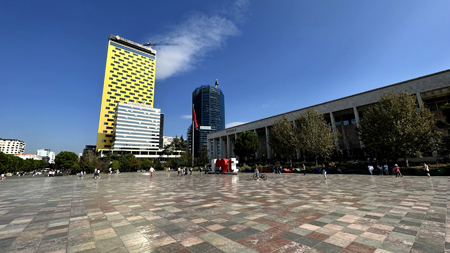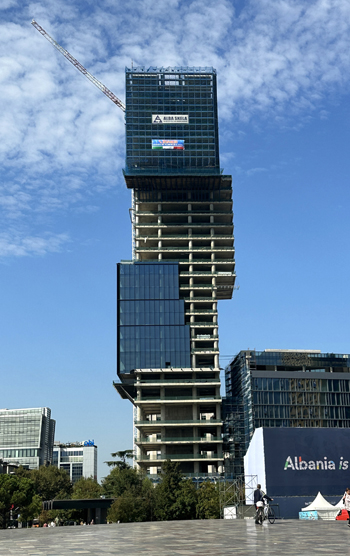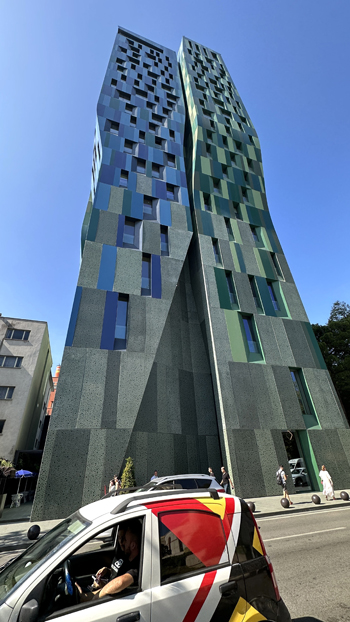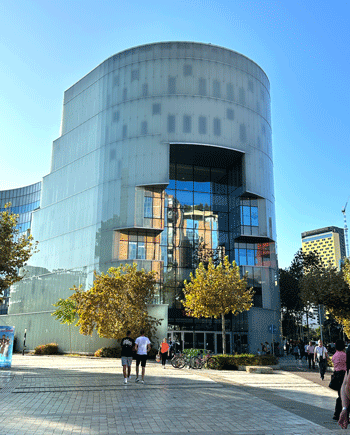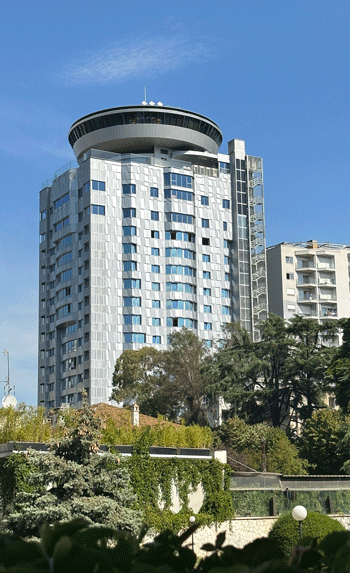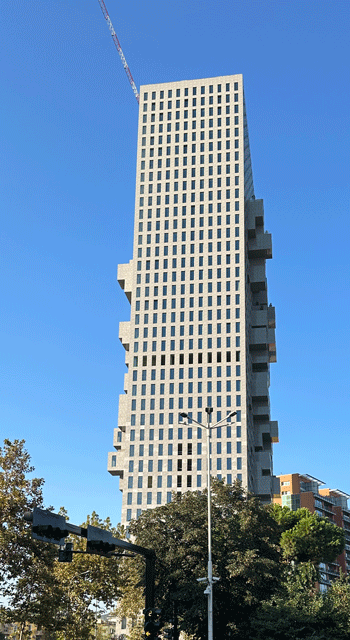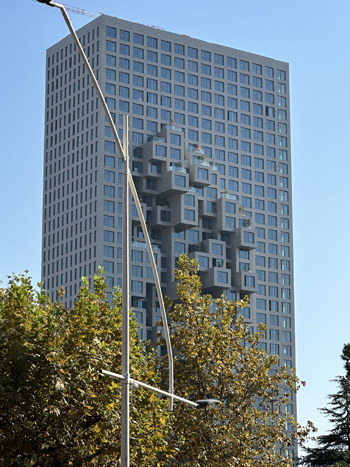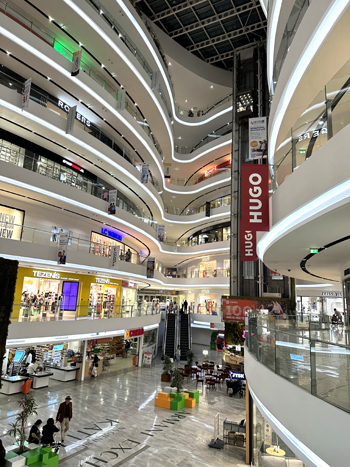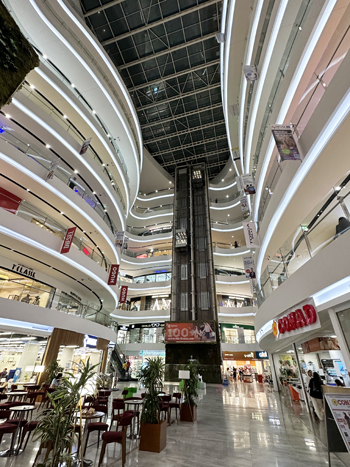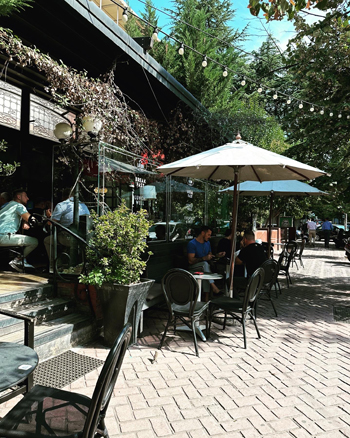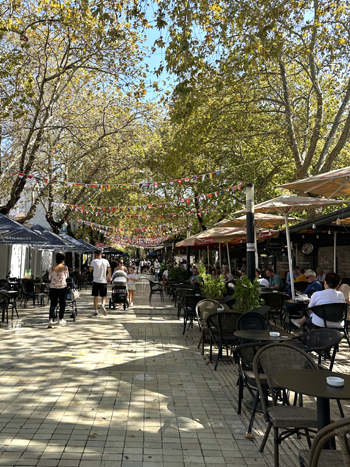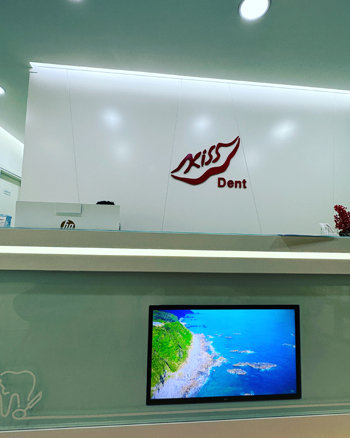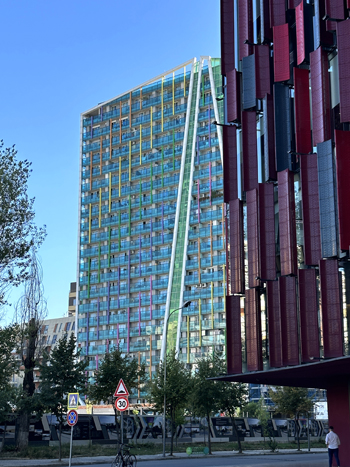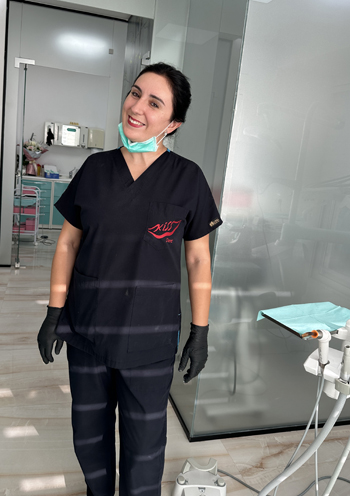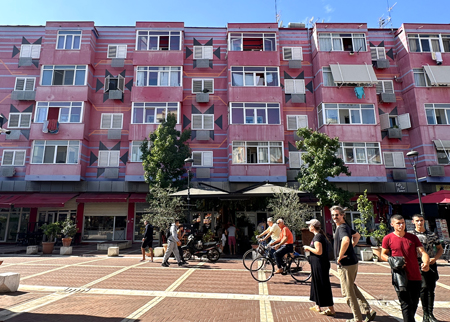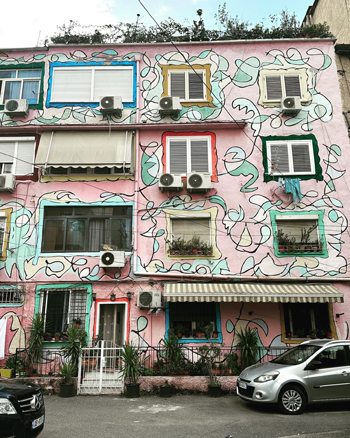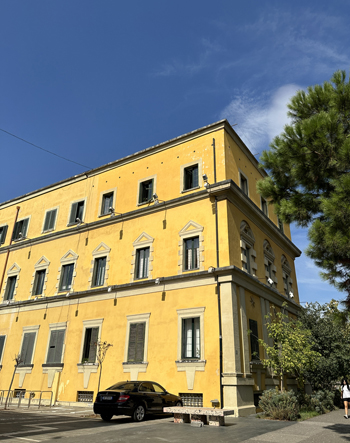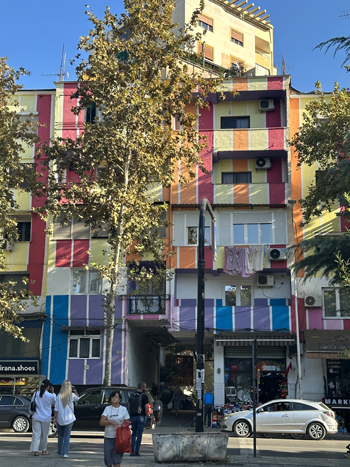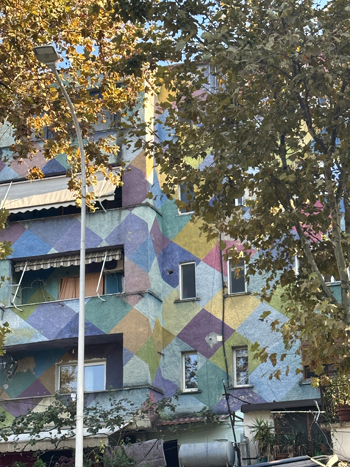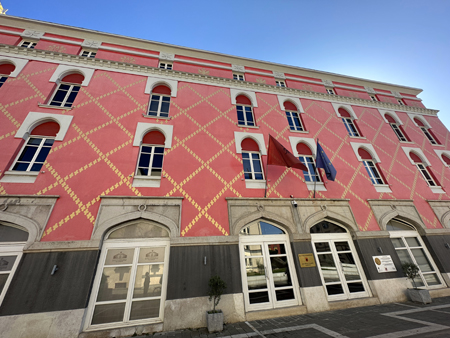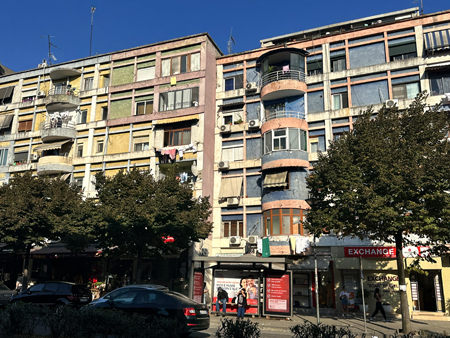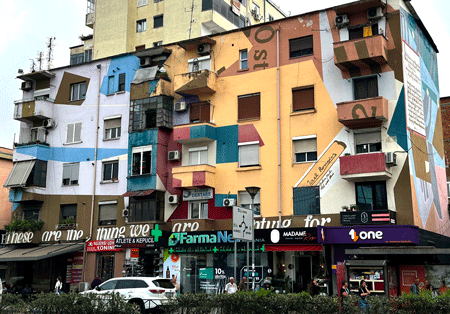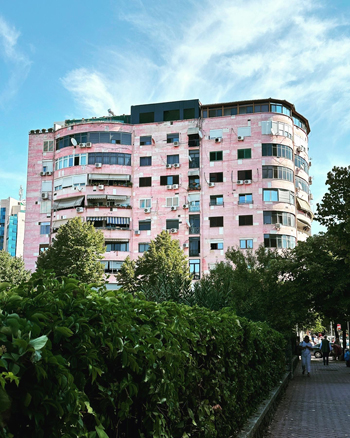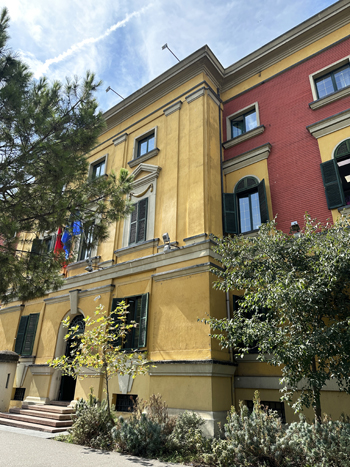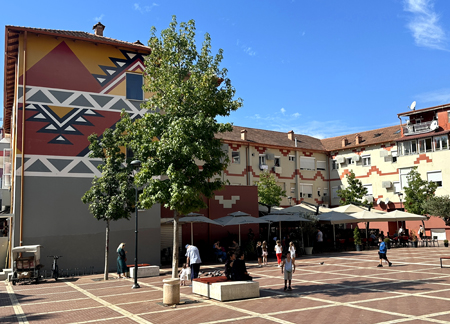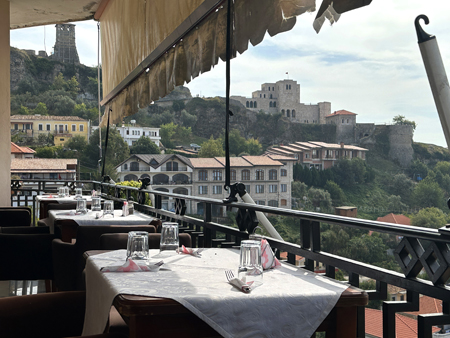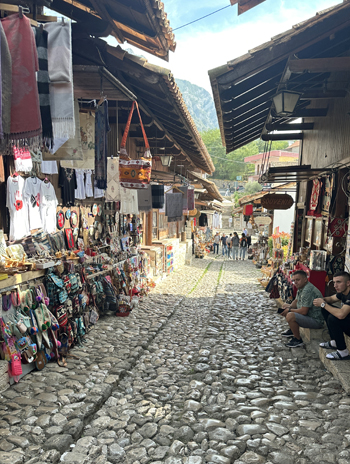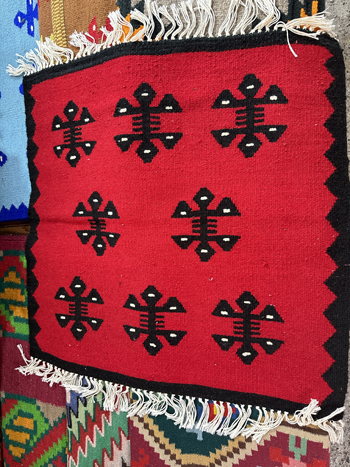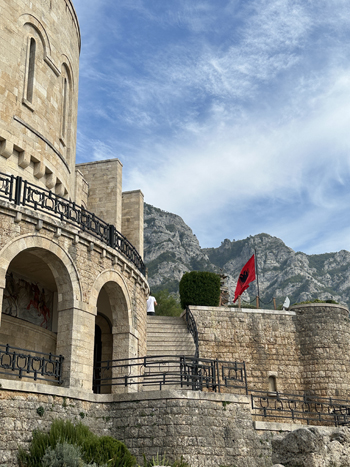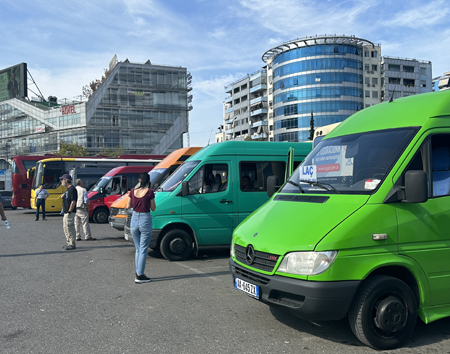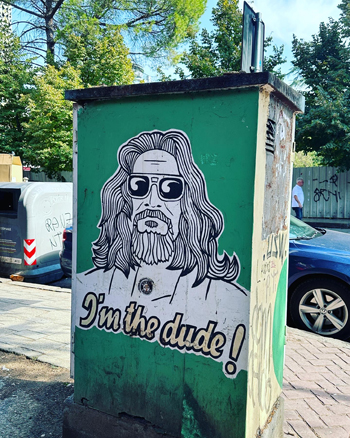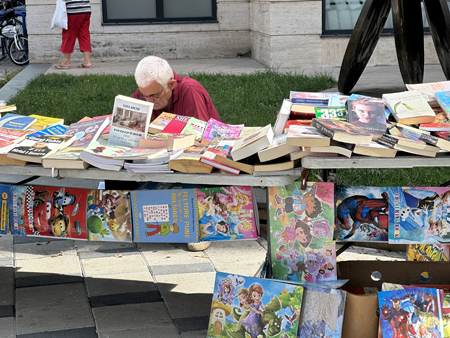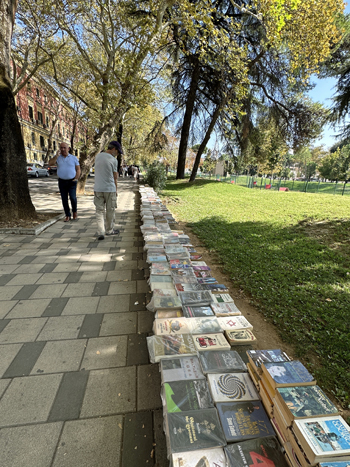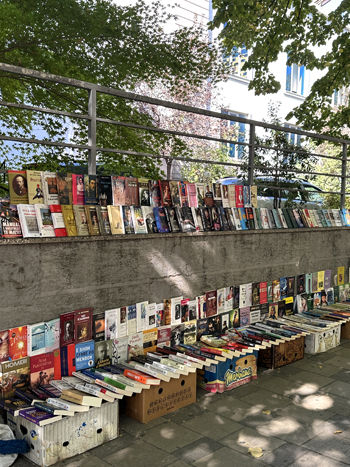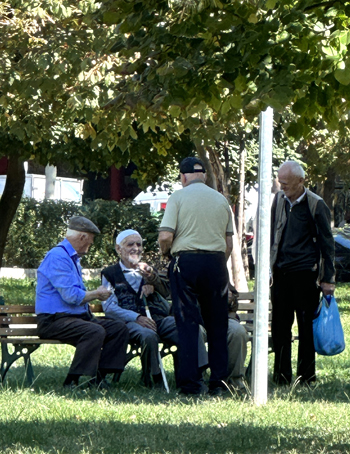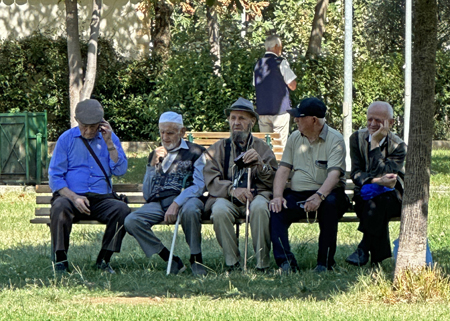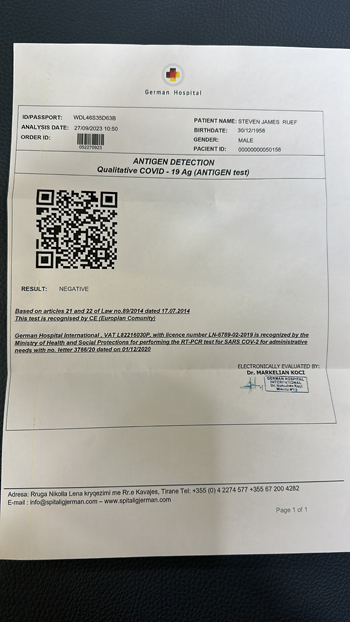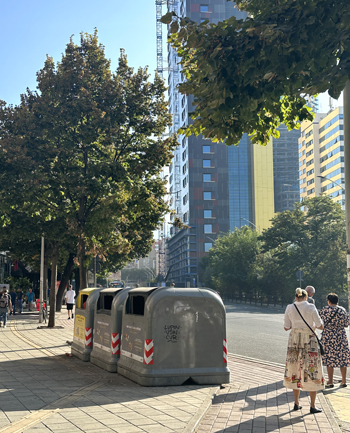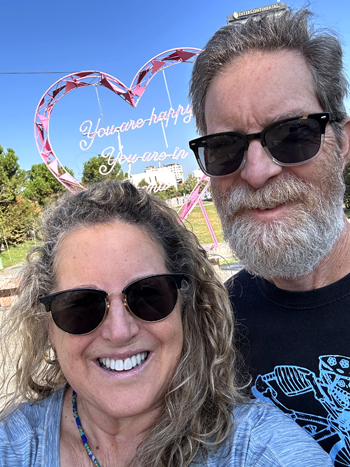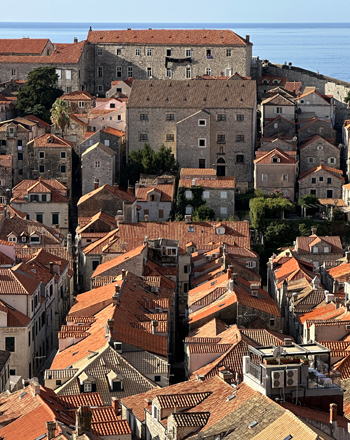
October 10 – 17, 2023
Beautiful Dubrovnik
I’m sure most blogs about Old Town Dubrovnik start out talking about the awe-inspiring views and the historic, beautiful all-stone city. But I’m going to start out by talking about garbage.
Garbage? What Garbage?
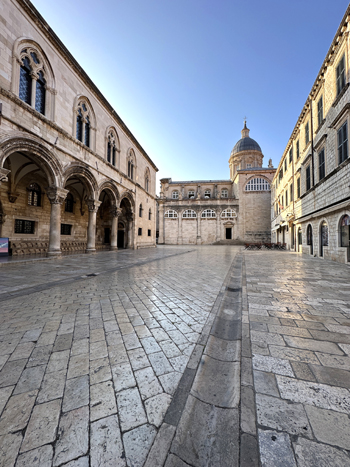
Here in Old Town Dubrovnik there’s a bit of a Disneyland feel. Everything is sparkling clean. Not a drop of garbage anywhere. Every paver looks shiny, like it was just mopped. There’s not a speck of anything on the ground, anywhere.
And, as it turns out, the whole garbage process is kept well hidden, away from tourist eyes. There’s no room for garbage in this magical land. Large, green, plastic garbage cans with wheels just don’t fit the ancient Old Town vibe.
Early Morning
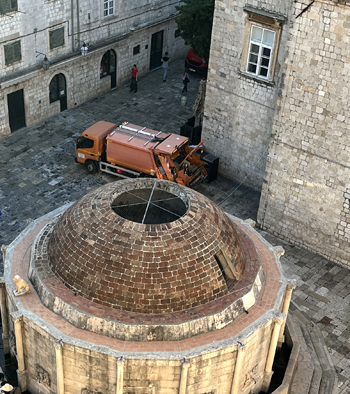
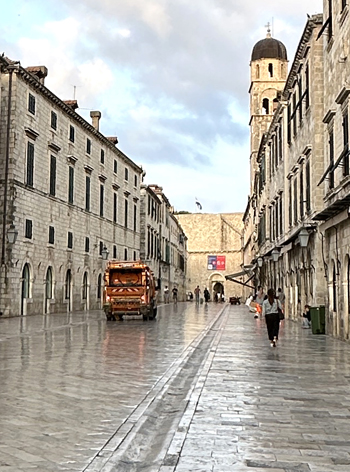
Twice now we’ve been out in Old Town in the very early morning and witnessed the Dubrovnik garbage collection scene.
It’s quick, efficient, and, dare I say, clean. The residents keep the garbage cans well hidden by day. As best we can tell, garbage cans are sequestered indoors. Then, sometime between midnight and dawn they are discreetly put to the curb.
Men In Orange
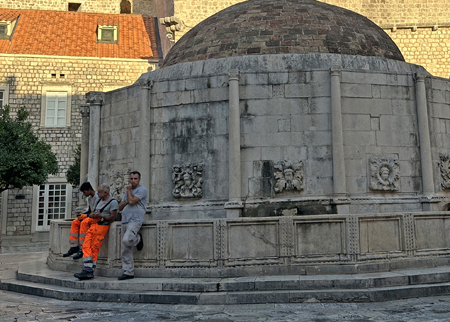
The garbage collectors are dressed smartly in bright orange. The garbage truck is quick to get any semblance of garbage handled well before the throngs of tourists appear for the day. And as soon as the cans are emptied, the green bins are quickly tucked away out of sight.
It was like a well choreographed dance. Impressive to say the least.
Getting to Old Town
The bus from Kotor, Montenegro, north to Dubrovnik, Croatia, took us through some beautiful country.
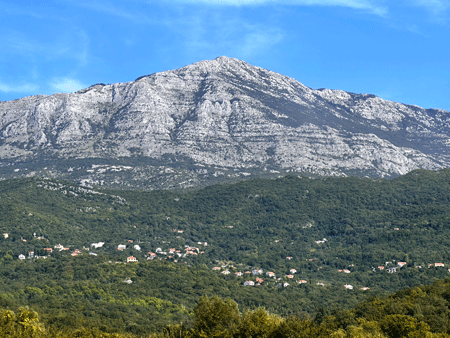
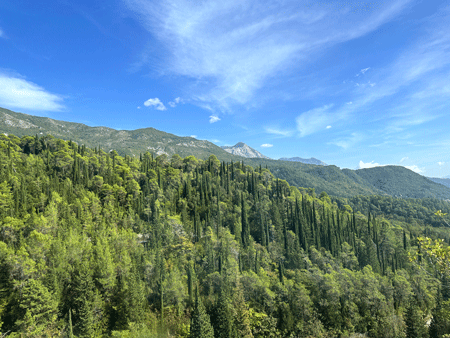
After several hours we arrived at the Dubrovnik bus terminal and took a cab to Old Town. The cab pulled over just outside one of the main gates to the Old City, the Pile Gate, which is not pronounced PILE.
Pile Gate
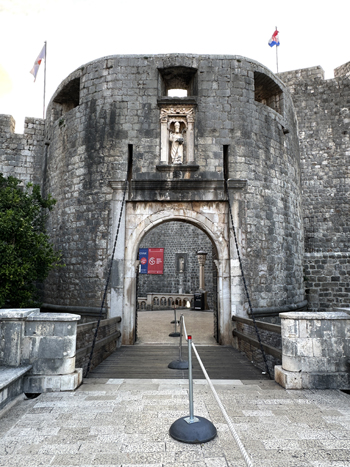
To my horror, it’s pronounced Pee-leh (said the taxi driver who corrected me). I’m sure he’s heard Pile Gate mispronounced a million times by foreigners like me. Thankfully he knew what I meant.
Anyway, we arrived, got out, grabbed our bags, and quickly stood to the side of the road, in full sun.
It was hot and everywhere we looked there were masses of people, tour buses, cars, taxis, and more people. It was a bit overwhelming.
Prime-Time Dubrovnik
It was two in the afternoon, which, as it turns out, is prime-time for the hoards from the cruise ships, as well as the masses of tour groups, that fill the streets of Old Town.
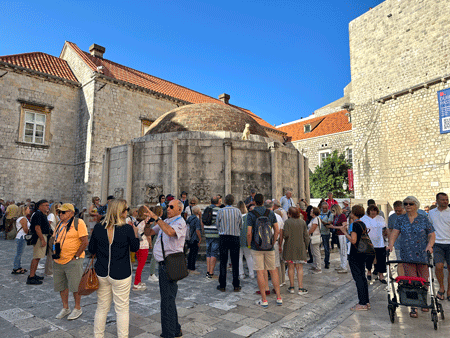
We took a deep breath and entered the city walls, on a mission to find our apartment.
Following google maps, we headed down a long, straight corridor, only about eight feet wide. The alley was lined with little shops and restaurants. Stone was everywhere.
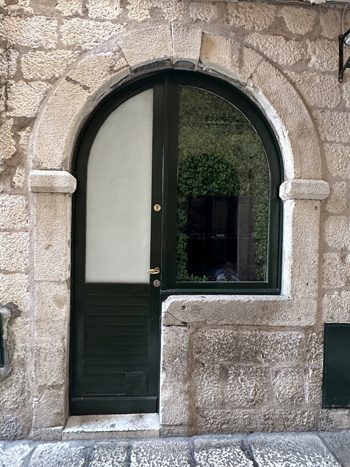
The walkway is made of ancient stone pavers and the buildings are all ancient stone too. Almost every door we passed had a half window attached, like the letter “P”. Not that we were noticing any of this at the time. Our complete focus was on maneuvering, ducking, dodging, and make forward progress.
Waves of Humanity
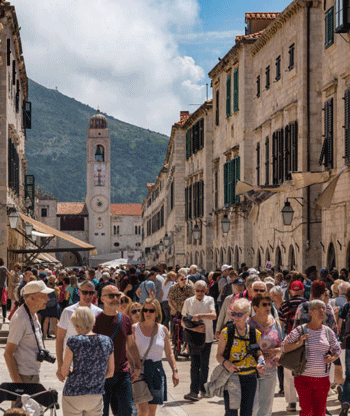
Diving into the alley was like entering a sea of people. Some were flowing along, some were bobbing about, and others were swirling. But the real problem were the people who were completely stopped.
Every 20 feet or so, a group of thirty people, all with matching listening device lanyards, would be stopped in a clump, clogging up the entire alley. They’d be intently listening (through their wireless device) to their tour guide as she pointed here and there.
I’m typically not an aggressive walker, but I did use an elbow or two to part the seas, so to speak. It was that or be continually delayed.
There were strollers, rogue toddlers, and people looking in store windows (not looking where they were going). There were people chatting, babies crying, teens laughing, kids screaming, and smokers smoking.
And there we were, hot, tired, sweaty, and in unknown territory, wheeling our carry-on luggage through it all. It was insanity.
It’s Timing
We were certainly a bit apprehensive about the Old Town after our first unpleasant encounter. But we decided it best to not stay holed up in our apartment watching Netflix for a week. Instead, we mustered the will to leave our humble abode.
We’re so glad we did.
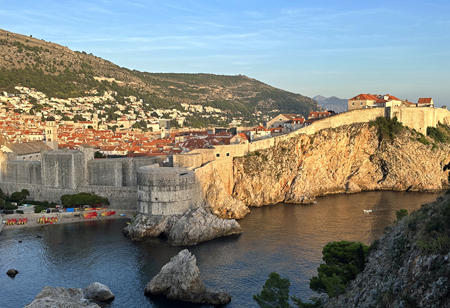
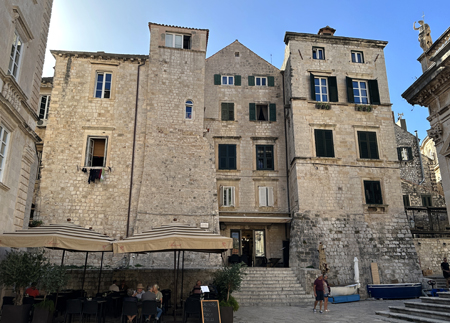
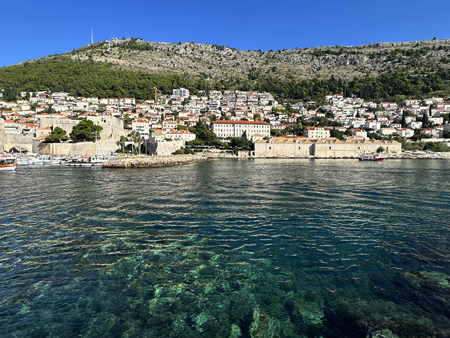
Dubrovnik really is the magical and breathtaking destination we had heard about and hoped for, just not in the mid-afternoon. It’s magical and breathtaking in the morning before 10 am, and again after 3 or 4 pm. I’ll call these the safe times.
The safe times are when things are calmer, quieter, and cooler. Most, if not all, of the tour groups and daytime excursions from cruises have not appeared yet, or have gone back from whence they came.
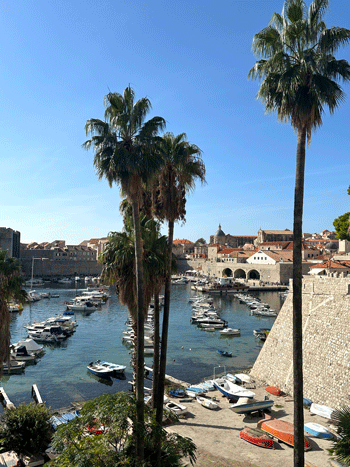
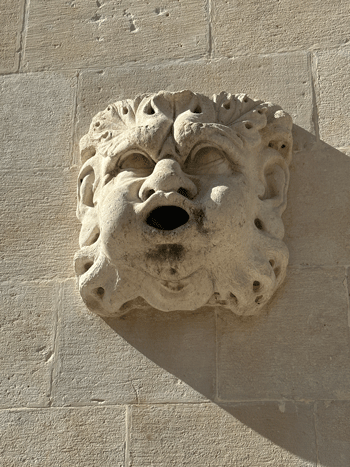

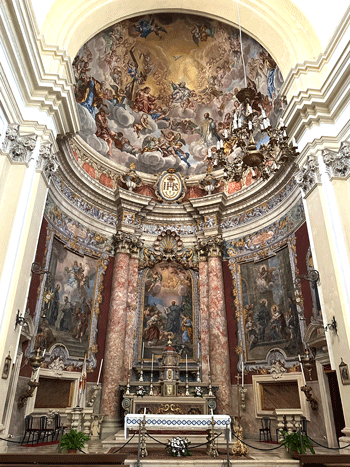
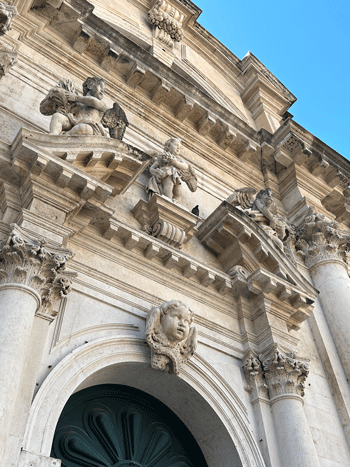
We had a full seven days in Dubrovnik, so we were able to leisurely schedule our days and take advantage of all the Old Town and surrounding areas had to offer.
We even got used to the mid-day masses, either grinned and beared it, or found a quiet museum to duck into.
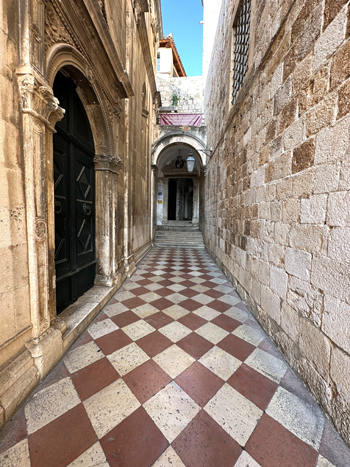
After leaving Dubrovnik we talked to a taxi driver (in Zagreb, the capital of Croatia) who told us October is the best time to visit Dubrovnik. He said in the summer it’s wall to wall people, so much so that you can’t even walk! So maybe we didn’t have it so bad, after all.
Old Town Dubrovnik
Just to be crystal clear, Old Town Dubrovnik is pretty amazing.
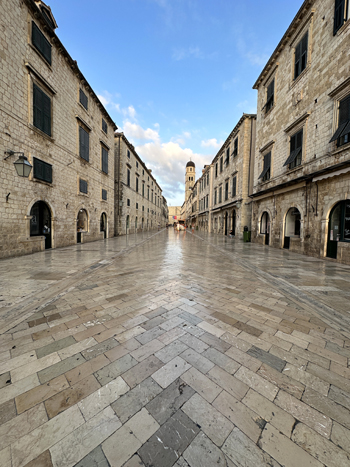
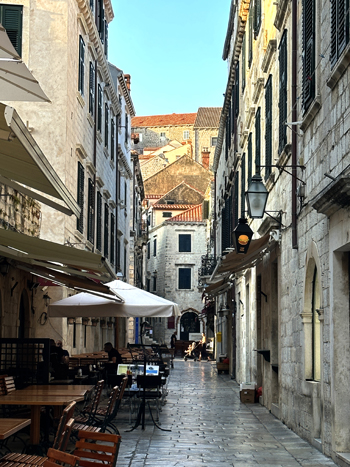
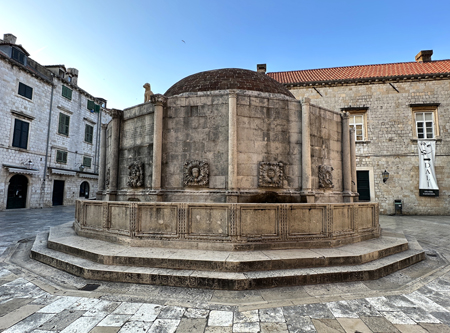
Dubrovnik sits on a rocky plateau that juts out into the Adriatic sea. Get up high and the views are stunning.
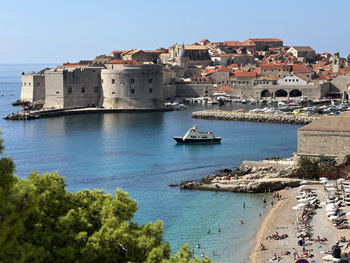
The town is home to architectural splendors like the baroque St. Blaise Church and the gothic Rector’s Palace.
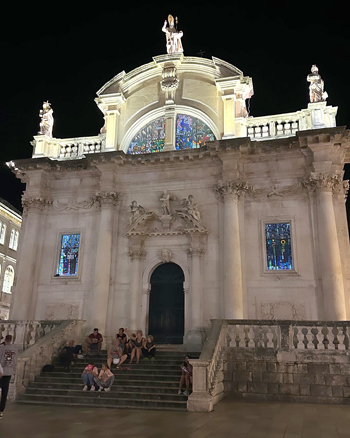
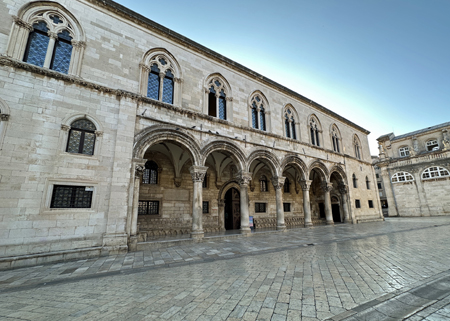
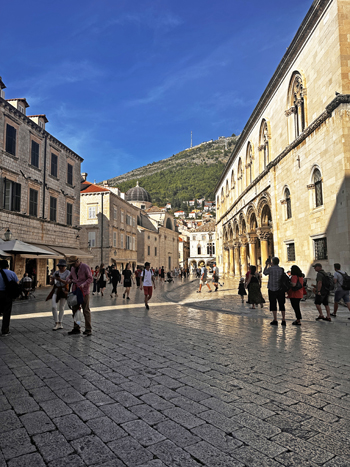
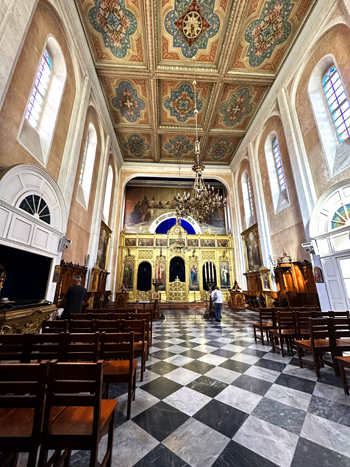
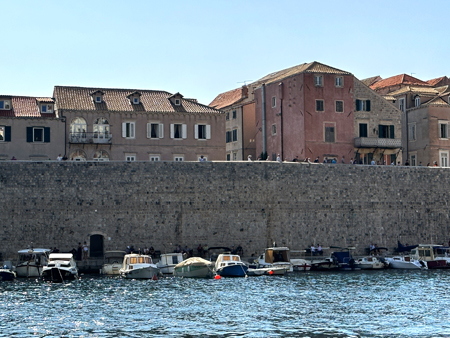
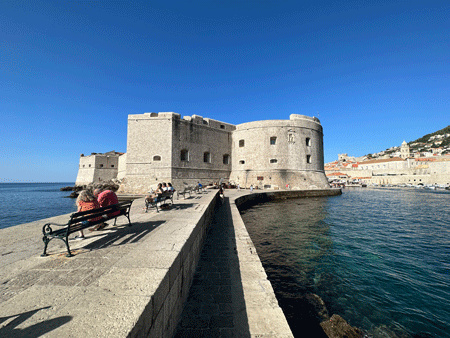
Upscale jewelry and clothing shops, cafes, and many, many ice cream stores line the streets.
The entire Old Town is pedestrian only, so restaurants and cafes compete for space in alleys and thoroughfares. Tables encroach on every walkway. It’s a delicate balancing act between who gets the precious real estate- tables or tourists.
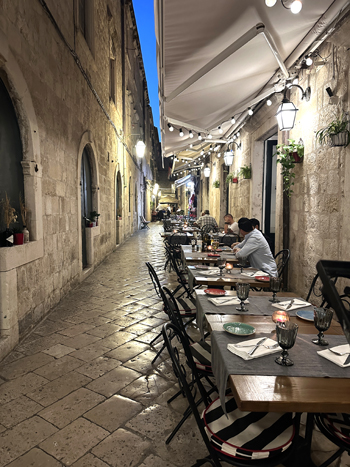
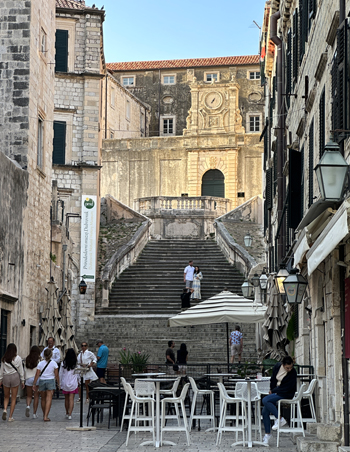
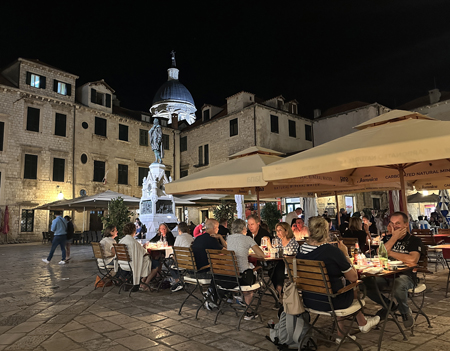
A Sordid Past
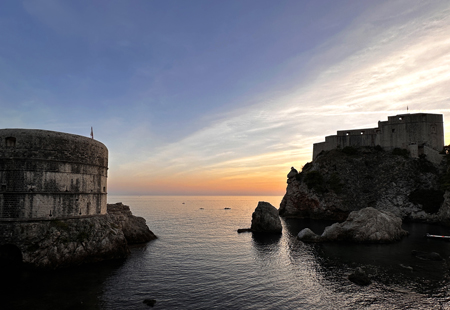
Old Town is entirely enclosed by the intact castle walls, which are jaw-dropping cool. But if you look closely you can see the evidence of a violent time in Croatian history.
Croatia fought for its independence from Yugoslavia in the early 1990’s. The shrapnel damage can be seen on the walls and in the street pavers. Much of the Old Town was bombed, but thankfully most buildings were left intact.
Croatia has only been free of communism since 1991, although the country (Yugoslavia) wasn’t closed to the outside world the way Albania, Hungary, or Russia, was, and it shows. Yugoslavia still had economic ties to the west, and its citizens could travel anywhere.
Walk the Walk
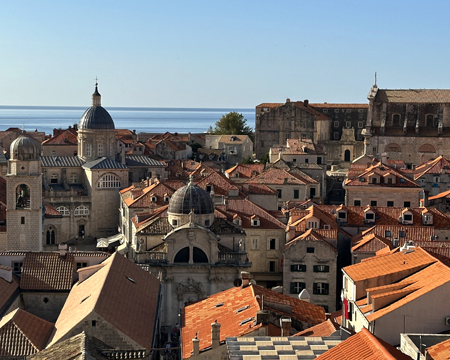
Of all the “to-do’s” in Dubrovnik, the hands-down highlight was walking the castle walls.
Walking the walls ranks up there as one of my top five experiences during my travels ever (but don’t ask me to name the others – I was just trying to help you to understand how incredible it was).
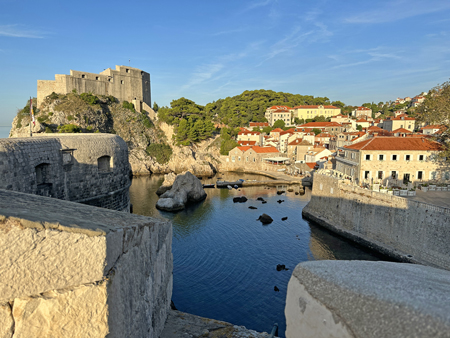
The city walls and ancient town of old Dubrovnik are one of the best preserved in Europe, and a UNESCO World Heritage Site (with good reason).
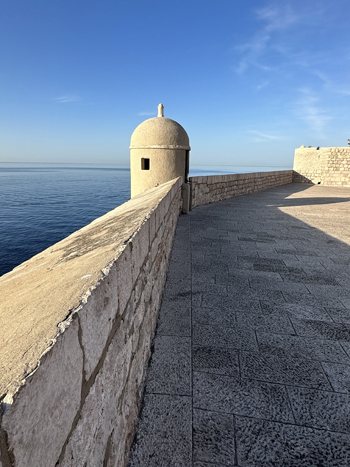
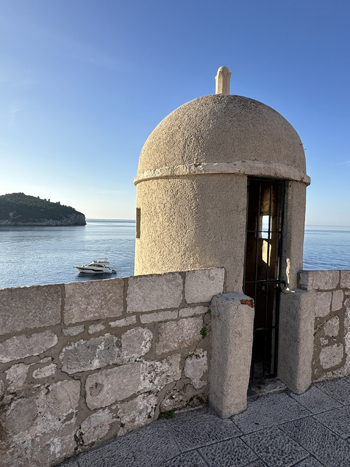
The city walls were constructed mainly during the 13th–17th centuries. As we walked, we saw the intricate and complex system of forts, bastions, towers and detached forts. The wall totals 1.25 miles long.
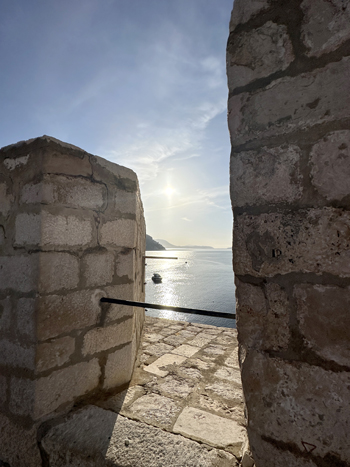
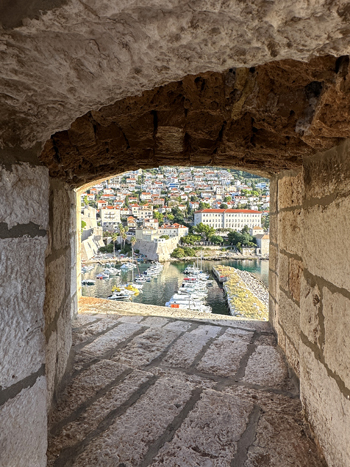
It’s amazing to see how truly massive the walls are. The main wall on the land side is 13-20 feet thick, but narrower on the side facing the sea at a mere 5-10 feet thick. The wall height reaches 83 feet in some places.
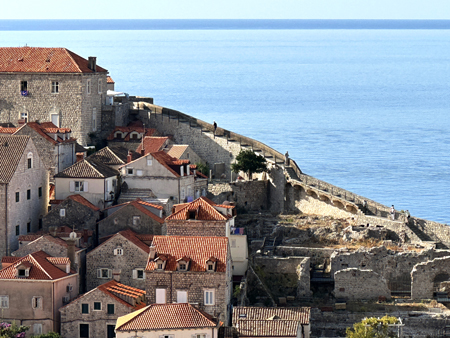
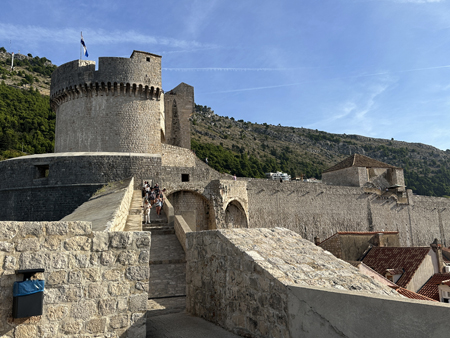
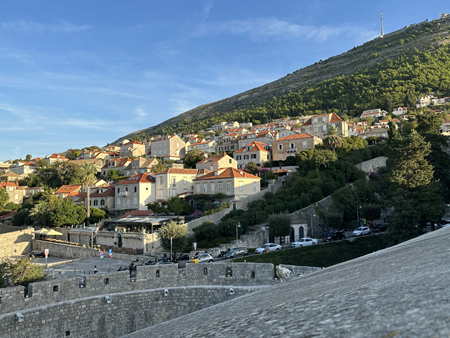
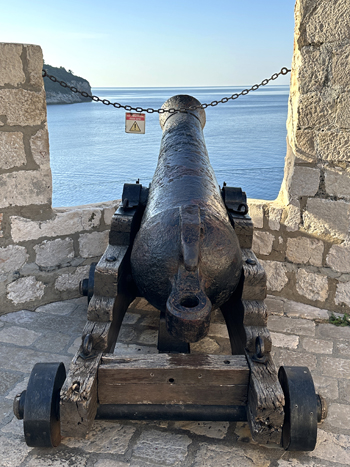
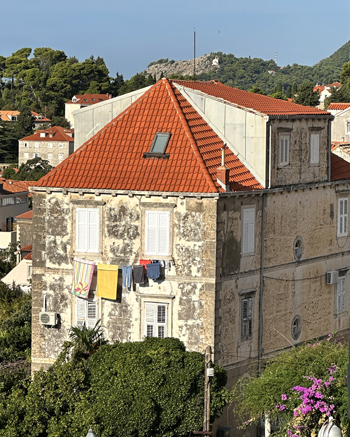
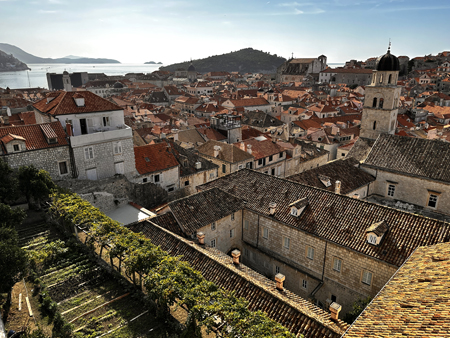
We took the advice of everyone and started our wall walk right at 8 am, when the walls opened. That advice was golden. We were practically alone for the first half of our walk. Even as the morning progressed, the crowds weren’t bad at all.
Yep, It’s Magic
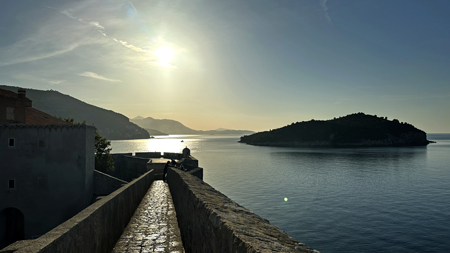
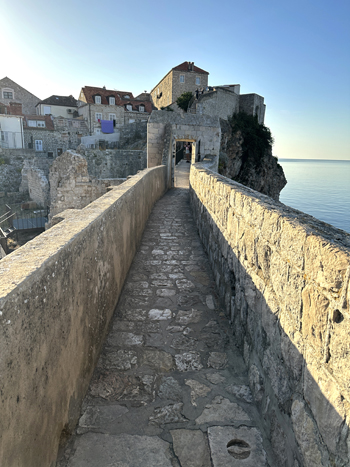
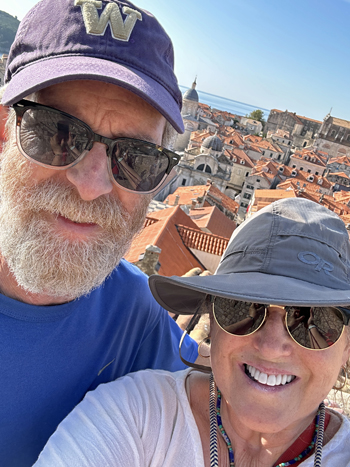
When we got up the steep stairs and emerged onto the wall, I was feeling giddy. The morning sun was rising over the Adriatic Sea. The water was sparkling and the light on the Old Town was breathtaking.
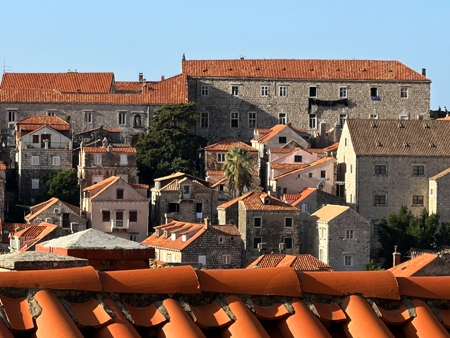
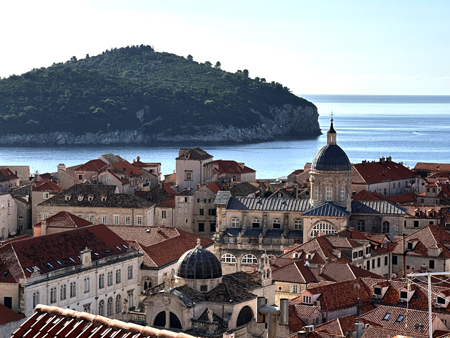
Looking out over the red tiled roofs with Lokrum Island and the Adriatic Sea in the distance was simply magnificent.
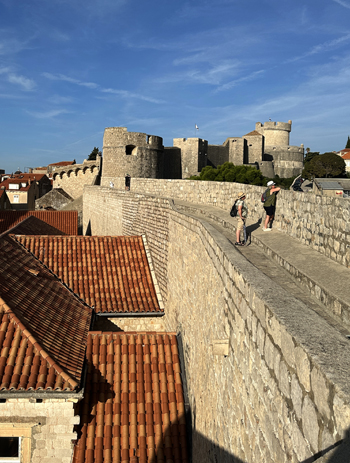

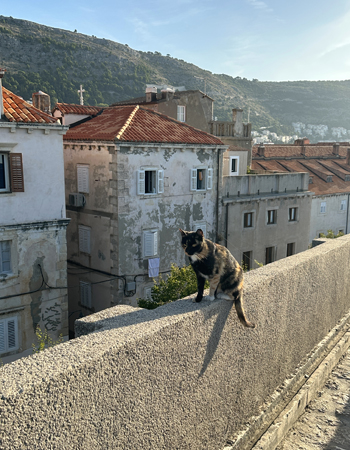
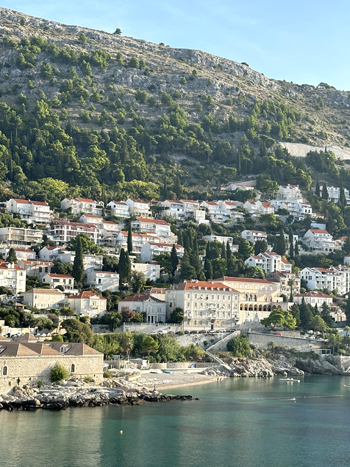
I think I took a thousand pictures. The experience is something I’ll never forget.
Cone Anyone?
I’ve never seen so many ice cream shops in one small area. Probably 50% of the people wandering Old Town are eating ice cream cones, even in the morning.
And we never had a single ice cream cone while there. I’m not sure why. Maybe the rebel in us. Go figure.
Our Place
We’ve been told, “Don’t stay in the Old Town! It’s crowded, busy, and super expensive!”. Yes, it is all those things. But after a short adjustment period noted earlier, we thrived in the Old Town.
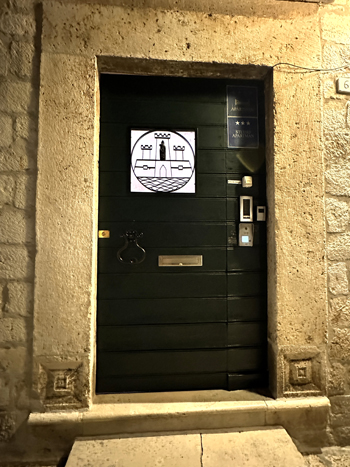
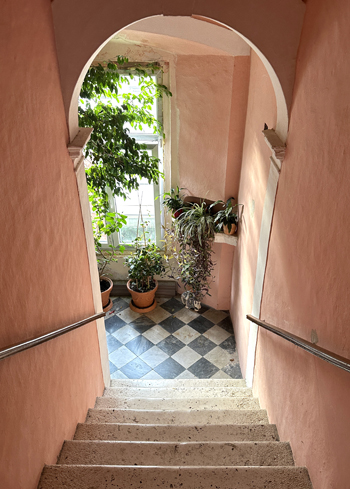
We were in a beautiful, centuries old building in a newly renovated apartment right on the busy and activity-filled Gunduliceva Poljana Market Square. Thankfully our apartment was on the backside of the building, so it was very quiet.
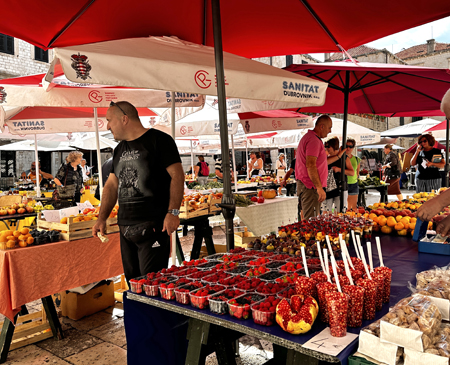
The Gunduliceva Square was bustling at all hours. Every morning a farmers market would spring up and fill the square.
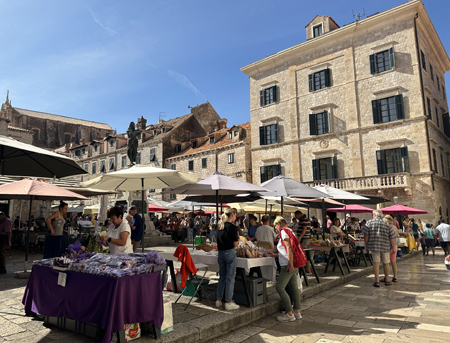
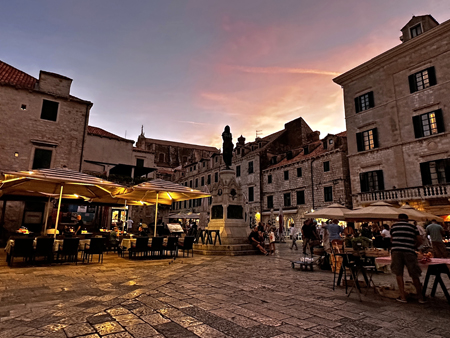
Late in the afternoon the farmers would pack up. Then the local restaurants fill the square with their tables, lit by (fake) candlelight. It was so charming.
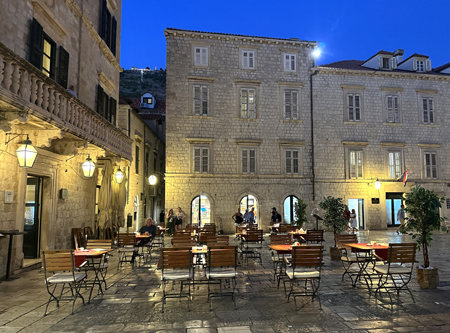
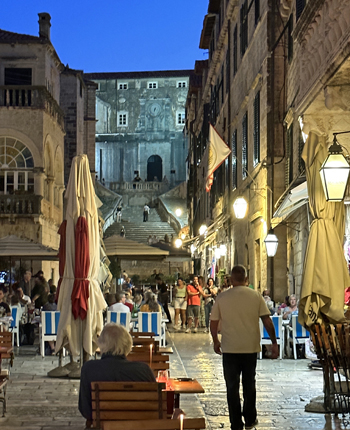
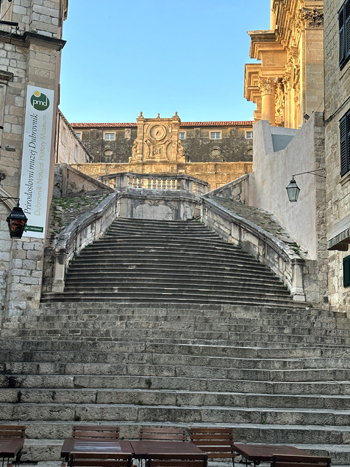
Other things we did:
War Photo Museum
Given the current events in Israel, Gaza, and the West Bank, this museum of compelling war photography was especially gruesome. The museums intent is to show the realistic effects and horrors of war. It succeeded.
A Three-Hour Tour
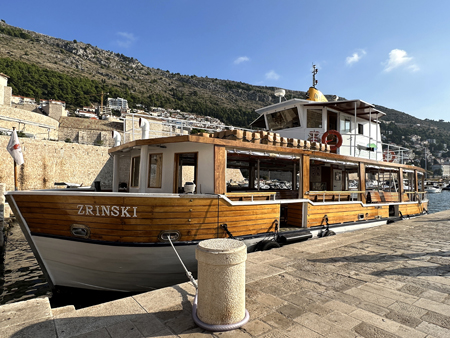
Sorry, that was a lame reference to Gilligan’s Island, a silly sitcom from the 1970’s. Actually, we took a Three Island Tour, that was more like seven hours. We went to the Elaphiti Islands, Kolocep, Sipan, and Lopud.
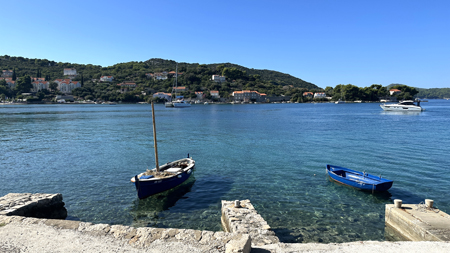
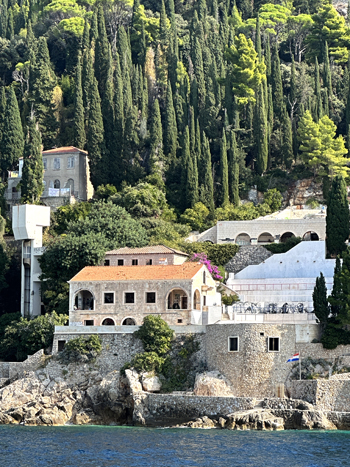
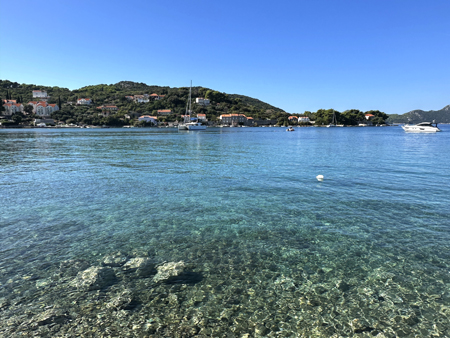
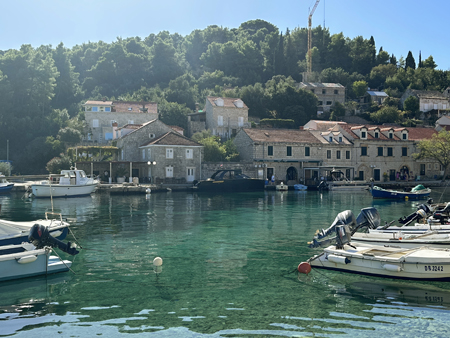
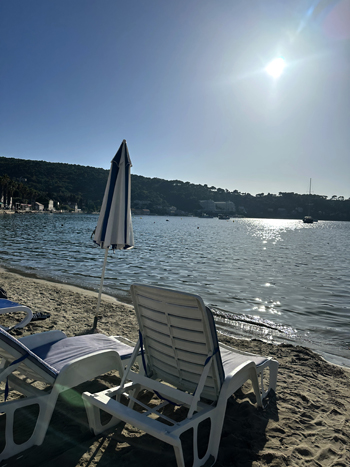
And while the islands were beautiful, it was a shame that we only were allowed to stay half the time we were promised. Even so, we were able to squeeze in some time on a gorgeous beach on Lopud Island.
Stroll the Stradun (and Old Town)
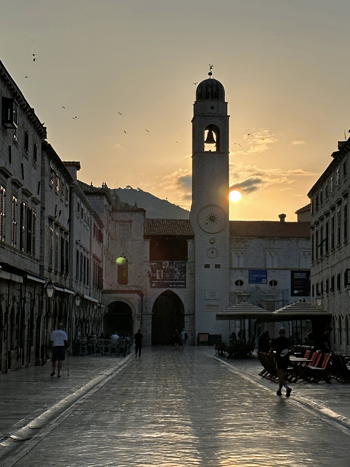
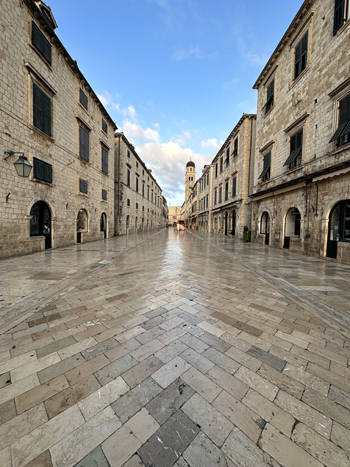
The main thoroughfare in the Old Town is the Stradun (or Placa). Walking down the Stradun, it’s incredible to see all the architectural styles. There are Renaissance (Sponza Palace), Gothic (Rector’s Palace which is a history museum now) and Baroque (St. Blaise Church) buildings.
Ferry to Lokum
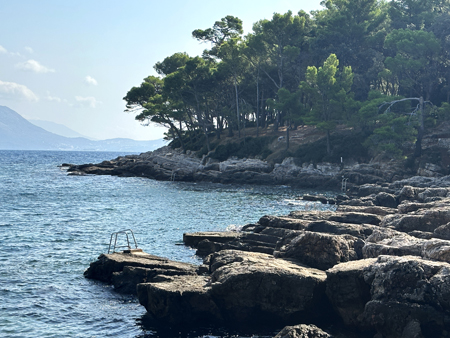
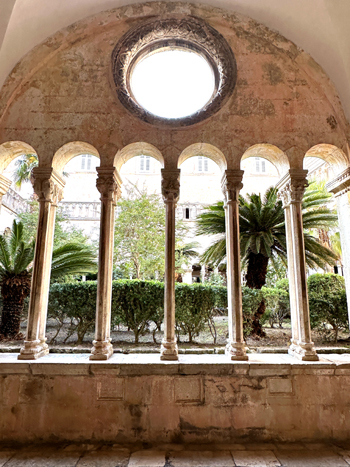
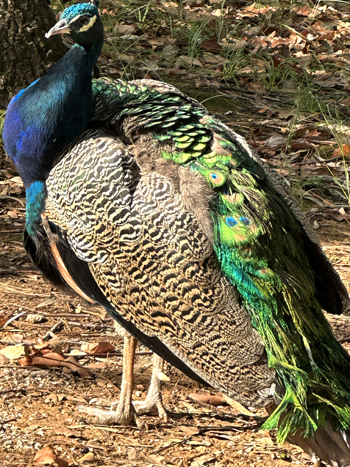
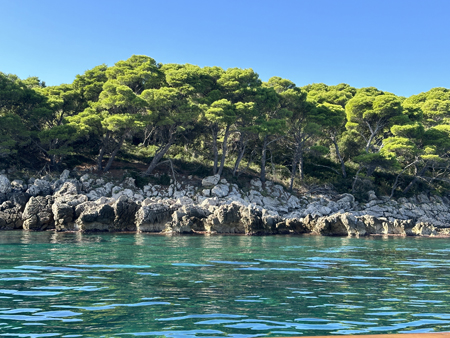
Just outside the Old Town harbor, Lokum island looms large. There are multiple ferries daily that only takes 15 minutes to deliver tourists to the small island.

Lokum Island is a beautiful nature reserve full of groomed walkways, trees, hiking paths, and enormous, flat rock formations that meet up with the sea.
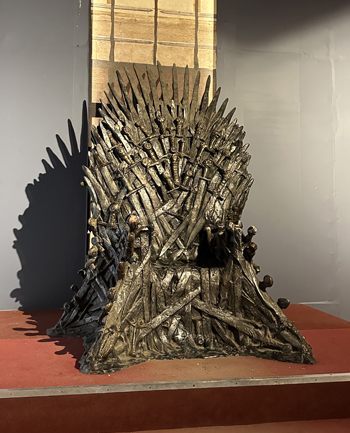
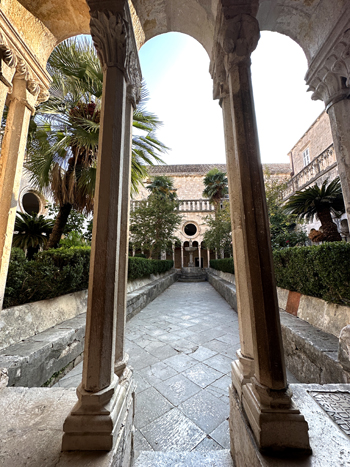
The Iron Throne from the Game of Thrones show was on display on Lokum Island. Much of GOT was filmed in Dubrovnik Old Town, as well as the Elaphiti Islands.
Wins and Losses
Wins
We had sensational weather the entire week – highs in the 80’s and sunshine!
We had a washer…very exciting!
Huge celebration! After 31 days of no TP allowed in the toilet, we have broken free and are once again able to finish things up as usual (and flush the tp)! Thank you Dubrovnik, for having a modern sewage system!
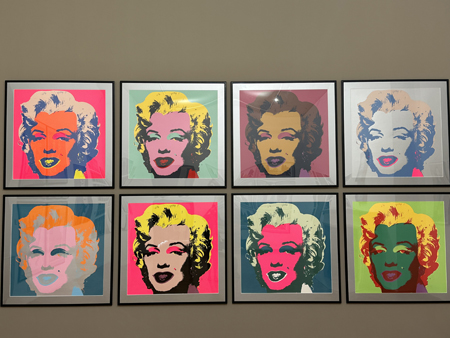
Caught a cool special exhibit on Andy Warhol at the Museum of Modern Art.
Losses
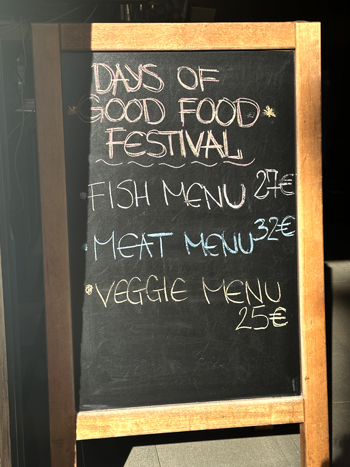
The restaurants were outrageously expensive. Simple entrees, like a burger or pasta dish, were $25-30 or more. And don’t even mention the price of a beer…even a coke was $8! And coffees were more expensive that at home! Yikes. We ended up doing breakfast and most lunches at the apartment to save $$, so it’s all good.
